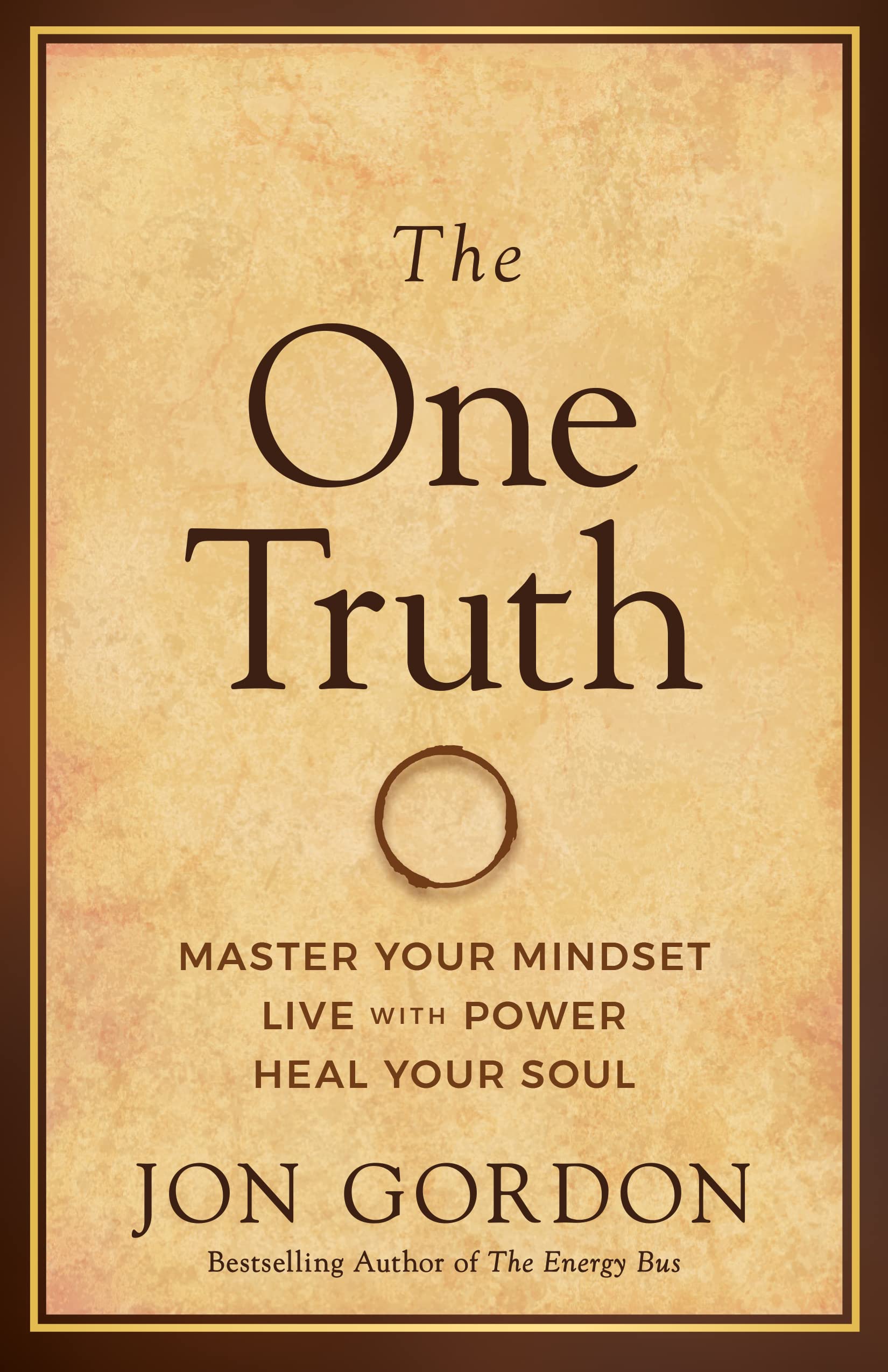An Excerpt from The One Truth
June 22, 2023
The One Truth, by 14x best-selling author and thought leader Jon Gordon, guides you on a path to discover revolutionary insights, ancient truths and practical strategies to elevate your mind, unlock your power and live life to the fullest.
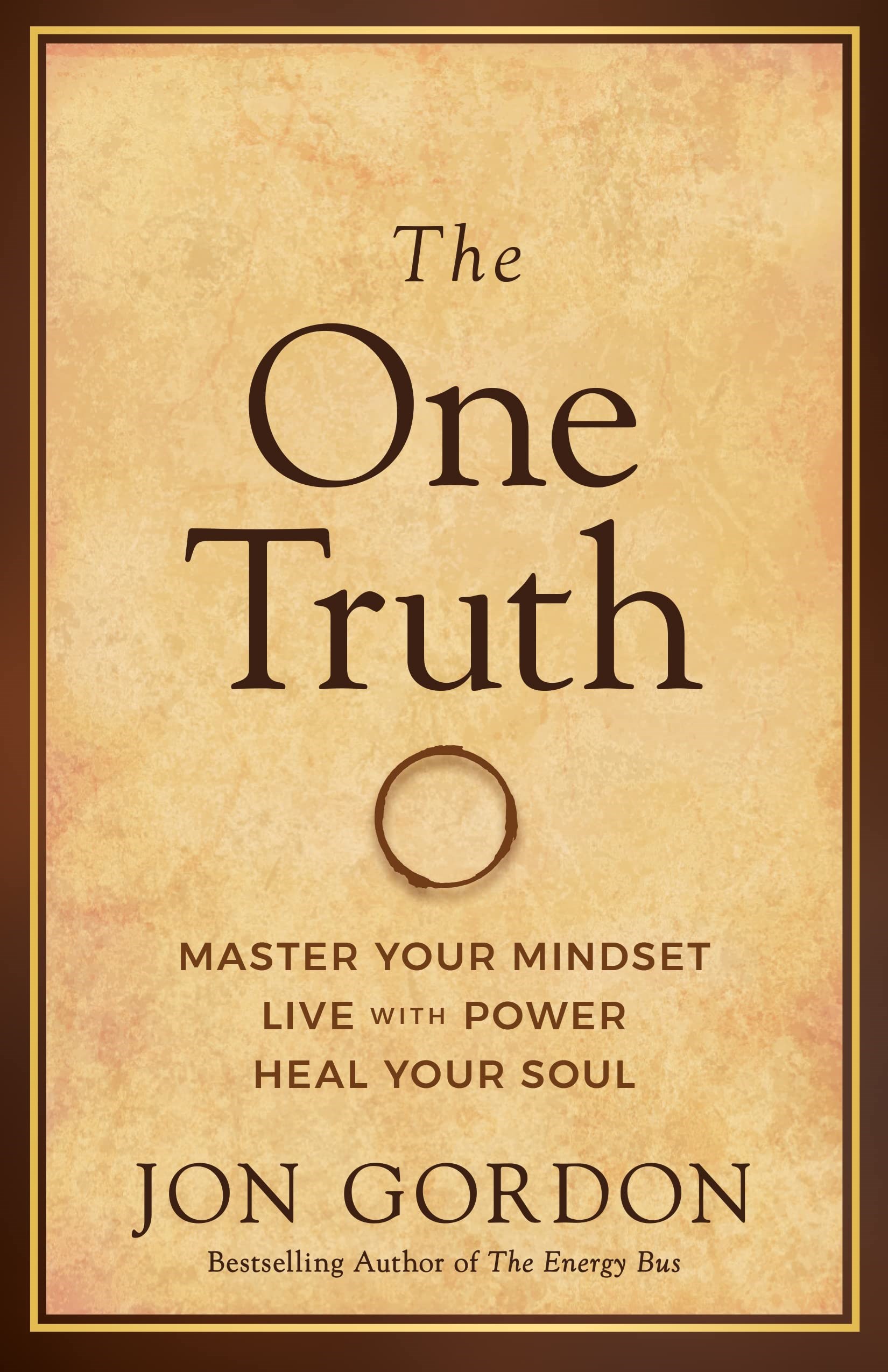 The One Truth is that our state of mind, the thoughts we think, the words we say, the life we live, the power we have and everything we experience is ultimately influenced by oneness and separateness.
The One Truth is that our state of mind, the thoughts we think, the words we say, the life we live, the power we have and everything we experience is ultimately influenced by oneness and separateness.
As you learn about the unseen forces that lower your state of mind, separate and weaken you and the hidden power that elevates your mind, unites and strengthens you, you’ll see life through a new lens, think with more clarity, confidence and act at higher level.
Once you know the One Truth, you’ll see how it impacts leadership, teamwork, mindset, performance, relationships, addictions, social media, anxiety, mental health, healing and ultimately determines what you create and experience.
For example, a team that is divided is disconnected and powerless. A team that is united is connected and powerful. The same applies to you. When you feel a sense of oneness, connection, and unity you feel strong. When you feel separate, you feel disconnected and weak.
The truth is, we are not meant to go through life feeling anxious, disconnected, insecure, cluttered, chronically stressed, worried and sad most of the time. We are meant to heal the hole in our soul and become whole. We are meant to live with hope, clarity, power, purpose, and confidence.
The One Truth will show you how!
The excerpt below is the book's first chapter, "States of Mind."
◊◊◊◊◊
Is It the Traffic?
One day you’re stuck in traffic and it bothers you; the next day in the same traffic, it doesn’t. Is it the traffic making you feel a certain way? If that was the case, it would make you feel the same way all the time and it would make everyone feel the same way. One day you’re listening to a song or podcast or just in a great mood and the traffic doesn’t faze you. Another day you’re pressed for time, have a lot of errands to run, and while sitting in traffic you start screaming. So if it’s not the traffic, what is it?
Let’s look at other examples to find the answer. A salesperson makes calls every day to acquire new customers and business. One day they receive a rejection from a potential customer and it really bothers them. They feel insecure and start to question themselves, their capability, and their future. Another day, they face the same exact kind of rejection but they move on and make another call with confidence that they will experience success. Is it the rejection that made them feel a certain way?
Consider the pandemic of 2020. Many struggled with their mental health during and after the pandemic, while others thrived. If you read many of the articles about that time, watched the news, and listened to conversations, you would hear people blame the pandemic for causing people to be a certain way, but as we have seen in previous examples, if it was solely the pandemic itself, then everyone would have responded to it the same way. The fact that they didn’t tells us there is another reason. To figure this out, let’s consider one final example.
Remember in school when you had a paper or project due and you couldn’t get started? You were paralyzed by fear or mentally stuck and unable to write or create it. But then you had a burst of clarity and were able to accomplish it. What happened? What changed? Was it the paper or project that caused you to feel a certain way?
It’s Always Your State of Mind
The answer is that it’s not the circumstance, environment, pandemic, test, project, or event that makes you feel a certain way. It looks like it is but it’s not. A closer look reveals it’s always your state of mind. If your state of mind is low when the circumstance happens, it affects you a certain way. If your state of mind is high when that circumstance happens, you are able to rise above it, overcome it, and move forward. When you make a mistake on the field, on stage, in a meeting, or on a sales call and you’re in a low state of mind, it really bothers you and you start to question yourself and your performance. But if you make the same mistake while you are in a high state of mind, you just brush it off and move forward. You have a next-play, next-moment mindset and look forward to the next opportunity. We’ve all experienced what it feels like to be in a low state of mind and how great it feels when we are in a high state of mind.
What Characterizes Low and High States of Mind?
A low state of mind is characterized by a lot of thought, a lot of clutter, fear, anxiety, worry, insecurity, and/or doubt. A high state of mind consists of a lot of clarity, focus, belief, and confidence. If you have ever been in the zone or engrossed in the moment of doing something you love without a lot of thinking going on, that is what a high state of mind feels like. And if you have ever felt fearful, with lots of thoughts swirling in your head, making you anxious and tired, then you know what a low state of mind feels like.
Two Circles

This picture of two circles represents your state of mind. One mind is filled with a lot of thought and clutter while the other has less thought and more clarity. Which mind is at a higher state and which will perform at a higher level? Everyone I have ever shown this to and asked these questions gives the same answer. The circle on the right. The mind with less thought and more clarity is the higher state of mind. We all intuitively know the truth and know the answer.
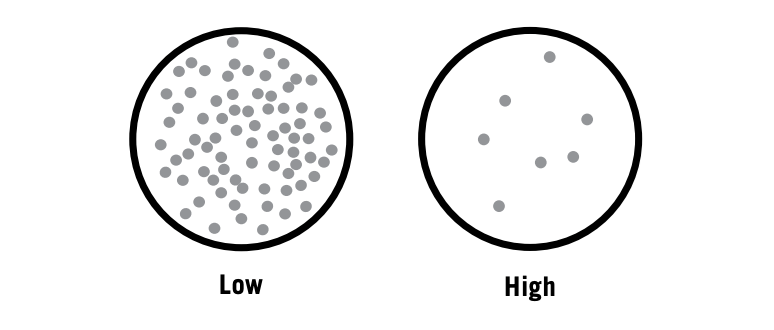
At this point, like most people, you are likely having a lot of thoughts about this picture and wondering how to have less clutter in order to move from a low state of mind to a high state of mind, or how to maintain a high state of mind when it is high. I promise I’m going to share the best way to achieve and maintain a high state of mind, but before I do it’s essential to understand how thoughts work and what lowers our state of mind.
The Roller Coaster
Imagine you’re on a roller coaster and you’ve never been on one before. You don’t know that the roller coaster will go back up. So as you race downhill, you think the roller coaster is going to crash. What would you want to do in that moment if you thought the cart you were in was going to smash into the ground? You would want to jump off and escape. When you are in a low state of mind, you want to jump off and escape. It’s why people over-drink, do drugs, play video games, and do all sorts of other things to escape the feeling they have when they are in a low state of mind. As an athlete, you don’t want the ball when you’re in a low state of mind; you want to escape, so you hope the ball doesn’t come your way, or you pass it back to your teammate. As a salesperson you don’t want to make the sales call when you’re in a low state of mind. As a performing artist, you don’t want to be on stage in a low state of mind. As a teenager, you don’t want to go to school or even get out of bed when you’re in a low state of mind. You want to escape the uncomfortable feelings and you often want to escape the reality of life.
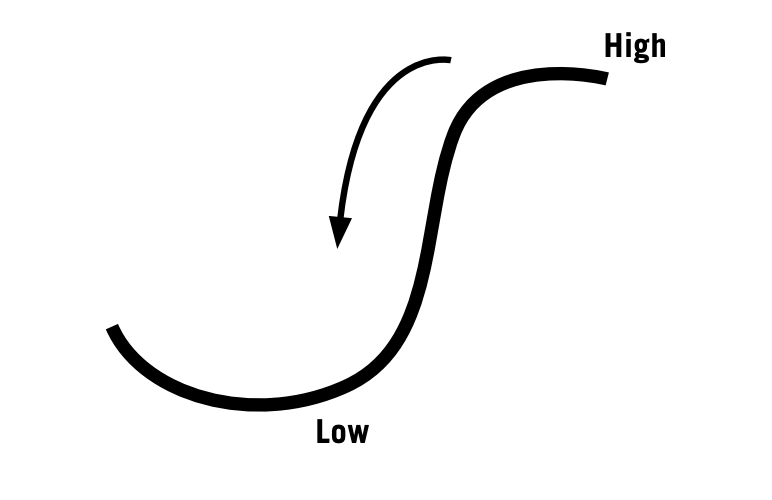
Revved-up Thinking In addition to wanting to escape when you’re in a low state of mind, you also can find yourself searching for answers. You have a lot of doubt, and the insecurity can make you think something’s wrong. You start searching for answers to try to fix the feeling that something is broken. This leads to more thinking and more clutter, and thus a lower state of mind.
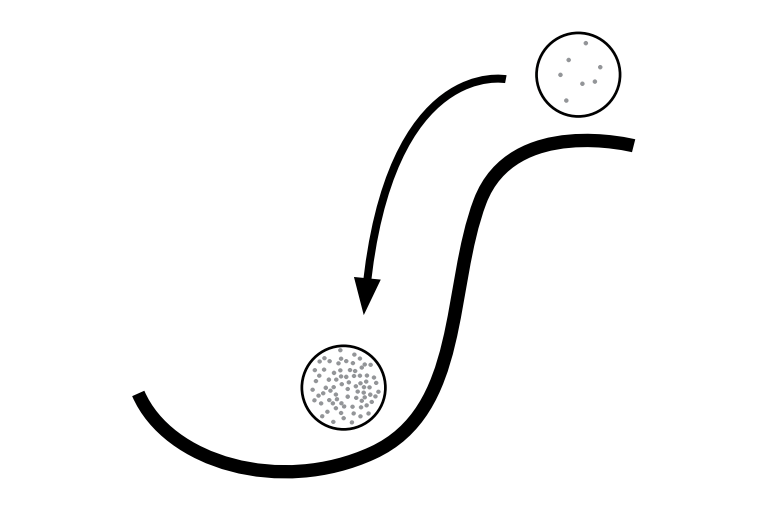
Baseball provides a great analogy. A batter goes 0–4, 0–3, and 0–4 in three straight games. Without a hit in three straight games, they start thinking something is wrong. They examine their swing and wonder if something is broken. The more they think about it, the more they have anxiety. Their revved-up thought increases clutter and lowers their state of mind, causing them to experience a major slump, which leads to more questioning, more thought, more clutter, more frustration, and an even lower state of mind. Does this sound familiar? It happens to all of us in every profession and in everyday life. Think of a guy on a date. He says something that upsets the woman he likes and the date goes horribly. On his next date with another woman he is cautious and anxious and doesn’t want to say the wrong thing. He has revved-up thought and a low state of mind. The energy isn’t flowing and she declines a second date. Now the guy is questioning everything and feeling even more insecure, which could lead to a downward spiral. So what should you do when this happens to you?
There Is an Ebb and Flow to Thought
Our reality is a world of duality. There is light and dark, good and bad, up and down, love and hate, high and low. As human beings, we experience an ebb and flow of thought, high states of mind and low states of mind. You might even experience different states a few minutes apart, or experience one state for a longer period of time before experiencing another state. You might experience a high state on Friday night and a low state on Sunday night as you think about the week ahead. Your state of mind is like a roller coaster, so you experience an ebb and flow of high and low in the course of your day, week, month, year, and life.
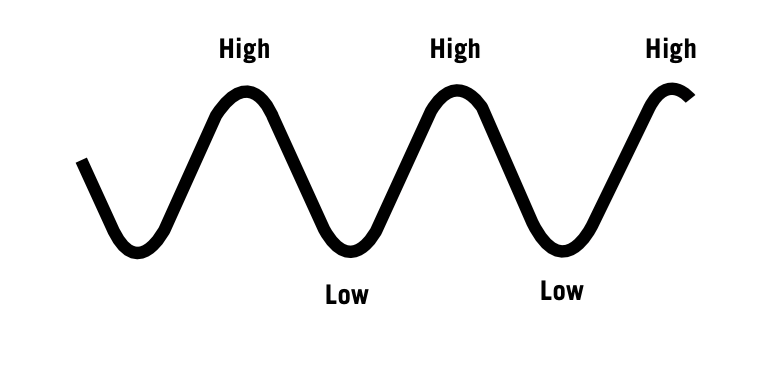
Don’t Escape
When you feel like the roller coaster is crashing and you’re experiencing a low state, the key is to recognize what’s going on and not jump off. Don’t try to escape. Realize that being in a low state of mind is normal. It’s part of being human. Nothing is wrong and nothing is broken. You are just experiencing the natural ebb and flow of thought. You may feel some discomfort or even pain, but stay in the game. You don’t have to fix anything. Stop searching for answers. Stop trying to fix something that isn’t broken. The minute you recognize that it’s not the circumstance making you feel a certain way, that you’re not a victim, and that having a lower state of mind is normal and not a reason to escape, your state of mind rises and you are able to ride the wave back up the roller coaster.
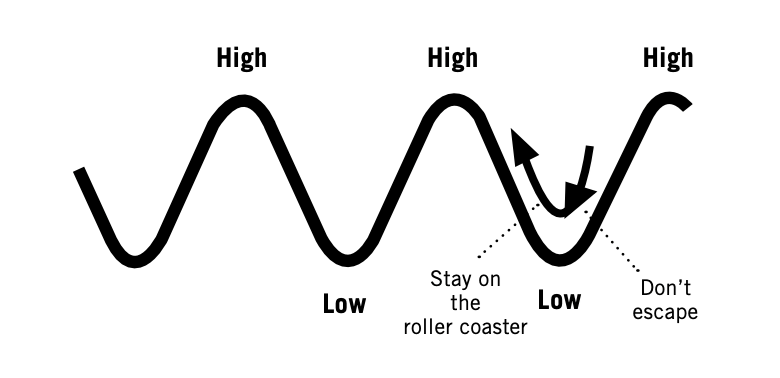
The more you practice this over time, the more you’ll find that your roller coaster hills of thought become less steep. The distance between your highs and lows gets smaller. You still have an ebb and flow but the ride becomes calmer and less scary. When you realize the roller coaster of thought is normal and there’s nothing wrong with you, you feel a shift immediately in your state of mind. That’s because the truth emerges and brings more clarity to you and your life. You now better understand how thoughts work. You aren’t the only one who experiences the ebb and flow of thought. Everyone does. It’s normal to have a range of thoughts, feelings, and emotions. You are simply human. Too often psychology slaps a label on you and makes you feel like something’s wrong with you, which causes you to fix what’s broken, which leads to more revved-up thought, more clutter, more anxiety, and feeling even worse. While the intention is good, the result is often bad. In many cases the answer is not to fix what’s broken but rather to remember that you are on a path to wholeness, as we will discuss often in this book.
With that said, we’ve all had moments where it feels like the roller coaster is stuck in a rut at the bottom and there’s no way it’s going back up. Even when we remind ourselves about wholeness, we may still feel broken. Because of this, I’ve found that it’s very helpful not only to understand the ebb and flow of thought, but also to understand how negative thoughts lower your state of mind and try to keep you down. So before I share other ways to raise your state of mind besides staying on the roller coaster, I want to explain how negative thoughts cause you to spiral downward and lower your state of mind. When you understand the Five D’s that sabotage you and your mindset, the answer about how to elevate your state of mind will be even clearer and will make more sense.
Excerpted from The One Truth: Elevate Your Mind, Unlock Your Power, Heal Your Soul.
Published by John Wiley & Sons, Inc., Hoboken, New Jersey.
Copyright © 2023 by Jon Gordon.
All rights rexerved.


